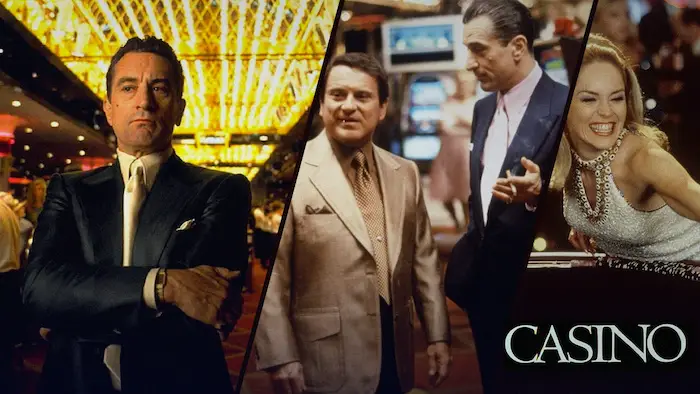Expressing the threat of the movie with the director’s characteristic touch
Renowned filmmaker Martin Scorsese has a mesmerizing ability to immerse audiences into the thrilling world of casinos. His films such as Casino (1995) exemplify his exceptional directorial skills and unique storytelling style. In this article, we’ll take a closer look at how Martin Scorsese’s unique approach enhances the casino genre and gives it a cinematic shine.
Complex characters and flawed protagonists
A trademark of Scorsese’s filmmaking is his skill in creating complex, multidimensional characters. In “Casino,” the characters are more than just one-dimensional heroes and villains. They are complex individuals with their own desires, strengths, and flaws. These characters make morally ambiguous decisions, and the line between right and wrong becomes blurred. This adds depth and authenticity to the story being told.
uncompromising realism
Scorsese’s dedication to capturing realism is evident in every shot of “Casino.” With great attention to detail, it expertly recreates the dazzling charm of the Las Vegas Strip, while also shining a light on the darker side of the casino industry. From luxurious casino floors to seedy backrooms, Scorsese effortlessly transports viewers into this world, creating an authentic and immersive cinematic experience that makes the gambling industry even more exciting. online casino.

charming narration
Martin Scorsese employs narration as a storytelling tool in “Casino” to enrich the story and give the audience a deeper understanding of the inner workings of the casino industry, personal conflicts, and moral dilemmas experienced by the characters. This unique style of narration is one of Scorsese’s trademarks and establishes an intimate relationship between the viewer and the protagonist.
Dynamic camera work and visual style
“Casino” captivates viewers with Scorsese’s deft camera work and visual style. Through long tracking shots and intricate camera movements, he draws the audience into the thrilling chaos of the casino floor. These techniques not only emphasize the grandeur of the setting, but also reflect the turbulent lives of the characters.

Music as a narrative tool
Music has always been an important element in Scorsese’s films, and Casino is no exception. The film has a diverse soundtrack that includes songs from different eras and genres. Each track is carefully selected to enhance the emotional impact of the scene, effectively turning the music into a character itself. It works in conjunction with the story and evokes a variety of emotions in the viewer.
Exploring moral ambiguity
In “Casino,” Scorsese presents his characters without judgment and delves into complex areas of moral ambiguity. Instead, he invites viewers to confront ethical dilemmas and reflect on the impact of their choices. This nuanced approach to storytelling allows viewers to become more involved in the story.
Collaboration with iconic actors
Throughout his career, Martin Scorsese is known for his collaborations with iconic actors such as Robert De Niro and Joe Pesci. In “Casino,” De Niro gives a mesmerizing performance as a quiet but morally conflicted casino manager. Pesci, on the other hand, brings a menacing intensity to his role as the volatile enforcer. Scorsese’s extraordinary ability to elicit strong performances from his cast is a testament to his exceptional directorial skills.
conclusion
Martin Scorsese’s directorial expertise shines in the casino genre, as seen in his film Casino. He crafts captivating stories with a masterful touch, intricately weaving together complex characters, authentic settings, and moral dilemmas. Scorsese’s signature style embraces realism, dynamic visuals, and an exploration of the human condition. This transforms the casino genre beyond mere spectacle into a deep cinematic experience. Director Scorsese continues to have a lasting impact on the film world, but his contribution to the casino genre remains an extraordinary testament to his talent as a director.
Source link




